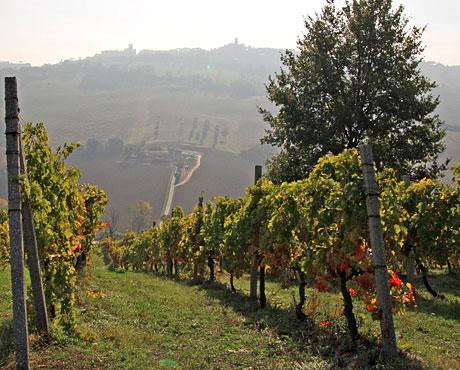|
|
Not too far below Offagna hill, dominated by an impressive medieval fortress, the Grigiano hill rises: steep and green, covered with vineyards and olive groves, wheat and sunflowers, surrounded by a frame of elms, oaks, hawthorn hedges, rosehip and mulberry hedgerows.
Here, at the foot of Conero mountain, the vineyards have been planted, facing the Aspi Creek that flows out to sea. Generous vines of Montepulciano variety, always present in our territory, make up the ancient vineyards of native variety for a wine which gives character to the Conero territory.
The first 9 hectares, planted in 1971, were cultivated to guyot: 2,200 plants per hectare. Today they are considered the grandparents of our vineyards and, like old sages, they bear little fruit, but of excellent quality with a yield varying between 30 to 40 quintals of grapes per hectare, about 1.4 to 1.8 kilograms per vine.
Between 2001 and 2006 another 10 hectares were added. These are the youngest vineyards and are planted ‘rintocchio’ style along the steepest slope facing south and southwest cultivated with the so-called ‘cordone speronato’ technique. There are 5,680 plants per hectare of the Agricultural University of Milan-cloned superior Montepulciano variety. Even in these younger vineyards the yield is between 1 and 1.5 kilograms per vine. The vines are fertilized with mature manure. The earth between the rows is planted with grass so as to protect the land from erosion and to maintain the humus richness of the soil.
The slow and constant manual labour in the vineyard begins in January. It starts with the pruning and continues every day with the care and selection of the vines and the grape bunches. In October the time comes to harvest the mature grapes.
|
|
